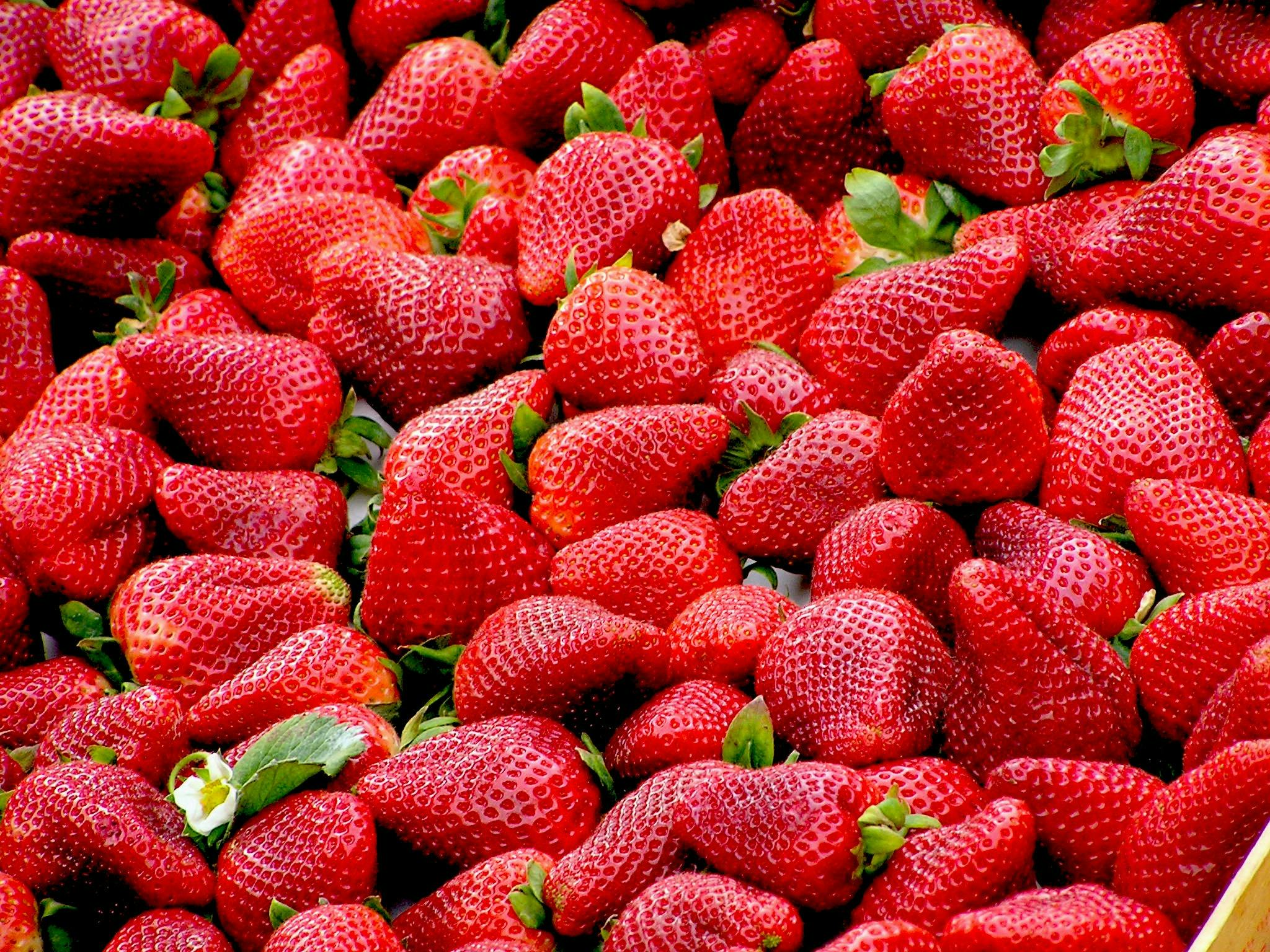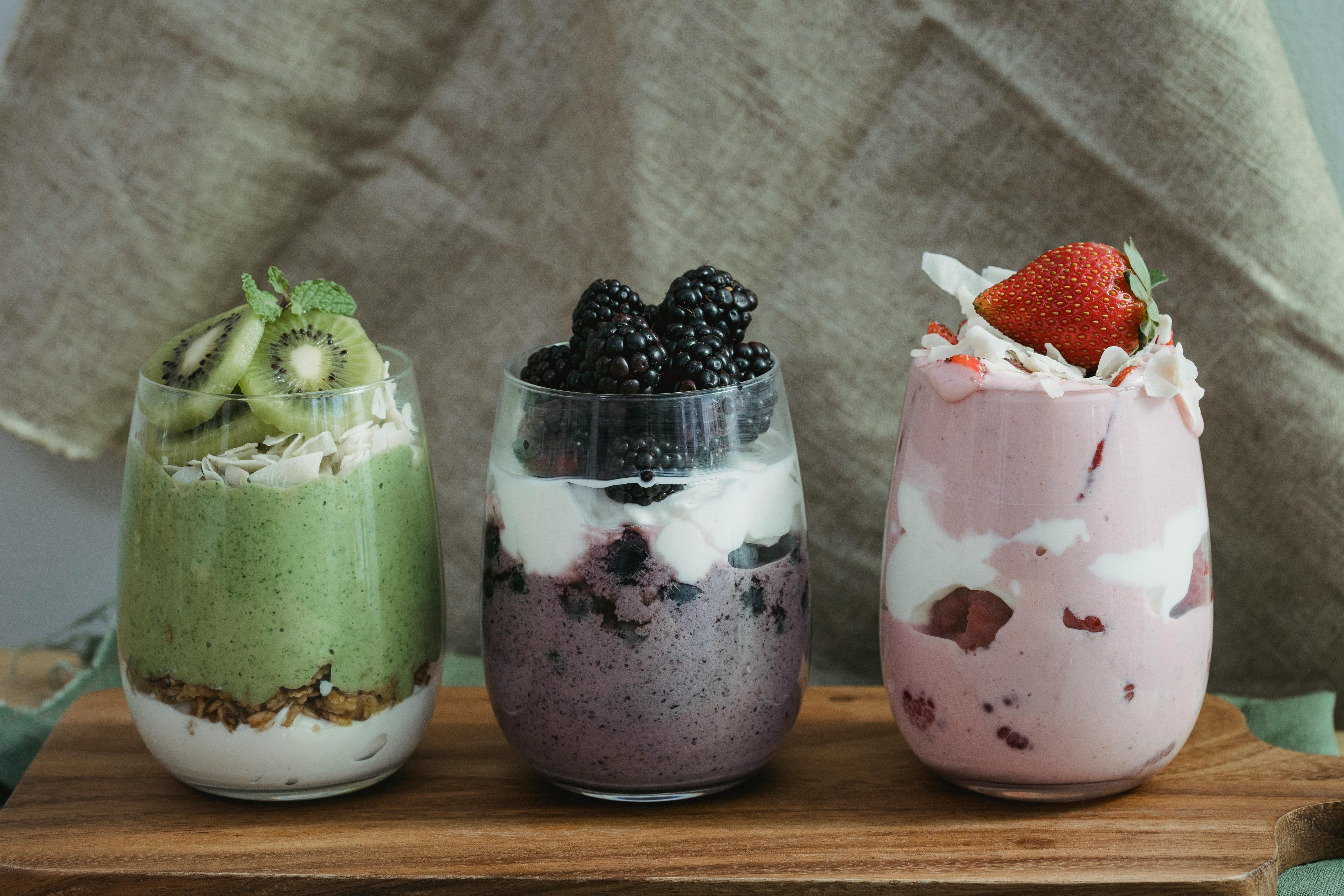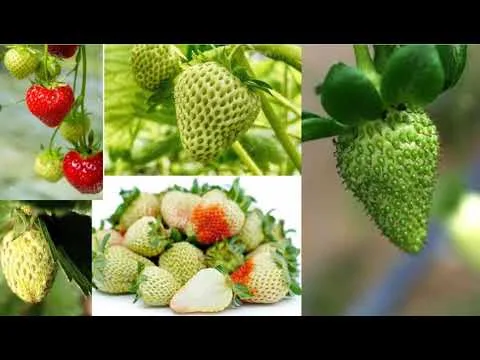Strawberries are one of the most delicious and popular fruits, and it’s easy to see why. Not only are they a great source of dietary fiber and Vitamin C, but their sweet and juicy flavor also makes them a favorite among adults and children alike. But why are strawberries red? This article will explore the science behind the vibrant hue of this beloved fruit.Strawberries are red because of the presence of anthocyanin, a red pigment found in many plants. This pigment is produced in response to different environmental conditions, such as sunlight and temperature. The amount of anthocyanin in a strawberry can vary depending on the variety and the growing conditions.
What Causes the Red Pigment in Strawberries?
Strawberries are known for their vibrant red color, which is due to a pigment called anthocyanin. Anthocyanin is a type of plant pigment that gives many fruits and vegetables their red, purple, or blue hue. In strawberries, anthocyanin is what gives the berry its crimson color.
Anthocyanin is produced from compounds found in the cells of a strawberry plant’s leaves and stems. These compounds are activated when the plant is exposed to sunlight, which causes the anthocyanin to form. The amount of sunlight a strawberry receives has an effect on its color since more light means more anthocyanin will be produced. This is why wild strawberries tend to be brighter in color than cultivated ones, as they receive more sunlight due to their location.
The temperature also affects the amount of anthocyanin that is produced in strawberries. Cold temperatures cause the production of anthocyanins to increase, which results in the development of a deeper red hue. This explains why strawberries grown in cooler climates have darker colors than those grown in warmer ones.
The amount of sugar present in a strawberry can also influence its hue since sugar acts as an antioxidant and helps protect the pigment from breaking down over time. As such, sweeter strawberries tend to retain their deep red color longer than those with less sugar content.
In addition to its role as a natural food dye, anthocyanin has numerous health benefits associated with it such as helping protect against certain types of cancer and heart disease as well as reducing inflammation and improving brain health. It also helps protect against oxidative damage caused by free radicals which can lead to premature aging and other illnesses.
Overall, anthocyanin plays an important role in giving strawberries their signature red hue while also providing numerous health benefits when consumed regularly.
How Does the Color of Strawberries Affect Taste?
The color of a strawberry can give you an indication of its flavor. Strawberries that are bright red and ripe tend to be the sweetest, while those that are pale and not fully ripe tend to be tart. The color of a strawberry can also tell you how mature it is; strawberries that are bright red and ripe will have been on the vine for longer than those that are still pale pink. This means that the longer a strawberry is left on the vine, the sweeter it will become.
The sweetness of a strawberry also comes down to its variety. There are many different types of strawberries available, each with their own unique flavor profile. Some varieties are naturally sweet, while others may be more tart or tangy. Some strawberries may even have an earthy or herbal flavor depending on their variety. So, while the color of a strawberry can give you an indication of its flavor, it is important to know which variety you have before making any assumptions about taste.
In addition to color and variety, other factors such as soil type and climate can also affect the taste of a strawberry. Soil type can affect how much nutrients a plant has access to, which in turn affects how sweet a fruit will be when it is ripe. Climate can also play a factor in how sweet or tart a strawberry will be; warm regions tend to produce sweeter fruits than colder ones.
Overall, while color can give you an indication of a strawberry’s flavor, there are many other factors at play that determine its taste. It is important to look at all aspects when trying to figure out what kind of flavor a certain variety will have – from color and variety to soil type and climate conditions. With this knowledge in hand, you should have no problem determining just how sweet or tart your strawberries will be!
Does Climate Impact the Color of Strawberries?
The color of a strawberry is determined by a variety of factors, one of which is climate. Temperature, sunlight, and humidity all have an effect on the color of strawberries. Warmer temperatures create strawberries with a deeper red hue while cooler temperatures produce lighter-colored strawberries.
Sunlight is also an important factor in determining the color of a strawberry. The more hours it receives, the brighter red it will be. In particular, ultraviolet light helps to bring out the red pigments in the strawberry. When there is less sunlight available, the strawberry will be lighter in color.
Humidity also has an impact on the color of strawberries. High humidity can cause strawberries to become darker in color, while low humidity can lead to lighter-colored fruits. The amount of water available to the plant affects its ability to create pigments that give it its deep red hue.
Overall, climate plays an important role in influencing the color of strawberries. Hotter temperatures, adequate sunlight, and higher humidity levels can all contribute to creating bright red fruits with high levels of antioxidants and flavor compounds. Thus, it is important for farmers and gardeners to consider these environmental factors when growing strawberries for optimal results.
Are All Types of Strawberries Red?
Strawberries are a widely-loved fruit that come in a variety of shapes, sizes, and colors. Depending on the type of strawberry, you can find them in shades of red, yellow, white, and even purple. So while it is true that many types of strawberries are red, not all strawberries are red.
The most common type of strawberry is the garden strawberry (Fragaria × ananassa), which is deep red when ripe and has a sweet flavor. This type of strawberry is widely available in grocery stores and farmers’ markets across the world. Other varieties include the alpine strawberry (Fragaria vesca) which has a much smaller size and more tart flavor than the garden strawberry; the yellow or white strawberry (Fragaria chiloensis); and black or purple strawberries (Fragaria iinumae).
Depending on where you live, you may be able to find some of these unique varieties of strawberries at farmers’ markets or specialty stores. In addition to providing different colors and flavors, these non-red varieties also provide a unique visual appeal when used as garnishes or decorations for desserts and other dishes.
Overall, while it is true that many types of strawberries are red, there are also several types available that come in different colors such as yellow, white, and purple. Whether you choose to purchase them from a grocery store or farmers’ market or grow your own at home, there’s something special about each type of strawberry that makes them worth trying out!

How Do Different Varieties of Strawberries Differ in Color?
Strawberries come in a range of colors, from light red to deep, dark red. Different varieties of strawberries also vary in their color. The hue and intensity of the color can depend on the variety and how ripe it is. For example, white strawberries are usually paler than red ones, and they have a sweet flavor that many people enjoy. Some varieties are even pink or yellow!
The most common variety of strawberry is the red-hued one that you find in grocery stores. However, there are several other types available with different shades and textures. Alpine strawberries are small with a sweet flavor and a bright red hue. They tend to be slightly darker than regular strawberries due to their higher sugar content.
Hood strawberries have a bright orange-red hue and are known for their intense sweetness. They tend to be a bit softer than other varieties due to their high water content. On the other hand, Seascape strawberries have a deep red hue and firm texture that make them perfect for baking or preserving.
Finally, yellow-fleshed strawberries have a unique flavor due to their higher acidity levels compared to other varieties; they also tend to be sweeter than other types of strawberry. These unusual fruits can easily be identified by their yellow color when ripe.
In summary, different varieties of strawberries vary in color based on how ripe they are and the type of strawberry itself. Red-hued berries tend to be the most common type found in grocery stores, but there are many unique varieties available with different hues and flavors.
Wild and Cultivated Strawberries in Color
When it comes to strawberries, there are two distinct types – wild and cultivated. While the cultivation of strawberries has existed for centuries, wild strawberries have been around for much longer. Both types can vary in size and shape, but the main difference between them can be seen in their color.
Wild strawberries tend to be smaller than their cultivated counterparts, with an average size of about one centimeter in diameter. They also tend to be bright red and juicy when ripe. On the other hand, cultivated strawberries can range from small to large and they may be shades of red or even yellow or white depending on the cultivar.
The main difference between wild and cultivated strawberries in terms of color is that the latter tend to have a brighter hue than the former. Wild strawberries are typically darker red while cultivated ones may range from light pink to deep red. This is because of how they are grown – wild strawberry plants usually grow in partial shade while cultivated varieties are grown in full sun which helps them ripen faster and encourages a brighter hue.
In addition, the shape of wild strawberries can also differ from that of cultivated varieties as they tend to have more pointed tips while those that are grown commercially often have rounder shapes due to manipulation by growers.
Overall, wild and cultivated strawberries may look different due to their size, shape, and color but both types can still offer a sweet taste when ripe.
What Role Do Genetic Factors Play in the Color of Strawberries?
Genetics play an important role in determining the color of strawberries. The color of a strawberry is determined by the pigment molecules that are present in the cells of the fruit. These pigment molecules are produced by enzymes that are coded for by specific genes. Depending on which genes are present, different colors will be produced when those enzymes are active.
Different varieties of strawberries have different genetic makeups, and this is what makes them unique. For example, some varieties may produce more red pigment than others, resulting in a deeper red color overall. Other varieties may produce more yellow or orange pigments, resulting in a more orange or yellow appearance. Additionally, some varieties may produce more anthocyanins, which can result in a purple hue to the fruit.
The genetic makeup of a strawberry plant also affects how much sugar the fruit contains. Strawberries with higher sugar content tend to be sweeter and have a brighter color than those with lower sugar content. This is because sugar helps to keep the pigments stable, producing brighter and more vibrant colors for longer periods of time.
In addition to genetics, environmental factors can also affect the color of strawberries. Temperature and light exposure both play an important role in determining how much pigment is produced by each strawberry plant. Exposure to too much heat can cause fruits to ripen faster than normal and become overly ripe before their full color has developed, while inadequate light exposure can cause fruits to remain pale and under-ripe even after they’ve been picked from the plant.
Overall, genetics play an important role in determining the color of strawberries as they provide instructions for how pigments should be produced within each variety of strawberry plant. Furthermore, environmental factors can also affect the final color of any given fruit since they can influence how much pigment is actually produced by each plant over time.

Conclusion
Strawberries are red due to the presence of anthocyanin, a type of pigment. Strawberries get their color from a combination of two pigments, cyanidin and pelargonidin. The amount and combination of these two pigments determines the exact shade of red. Strawberries also contain other pigments which contribute to their flavor and texture. Strawberries are enjoyed all over the world for their sweet taste, bright color, and nutritional benefits. They are a great source of vitamin C, fiber, antioxidants, and other nutrients.
In conclusion, strawberries are red due to the presence of anthocyanin pigments found in their cells. These pigments not only give them their vibrant color but also contribute to their flavor and texture. Despite being small in size, strawberries are nutrient packed fruits that have been enjoyed for centuries for their sweet taste and health benefits.



